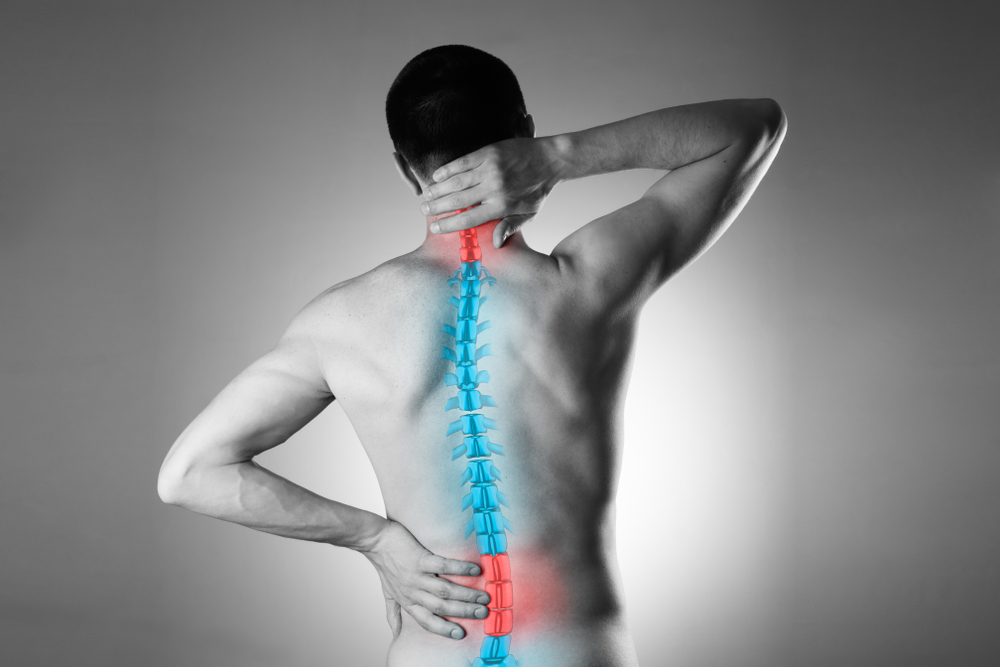
Athletes, by the nature of their physical activities, are at a higher risk for herniated discs. The repeated strain and stress on the back and neck during rigorous training and performance can lead to such injuries. Understanding the causes, symptoms, and treatment options for herniated discs is crucial for any athlete. It not only helps in timely recovery but also aids in preventing future occurrences.
Causes of Herniated Disc in Athletes
Herniated discs in athletes are commonly caused by the repeated strain and stress during training and performance. Actions such as twisting the body, lifting heavy weights, or sudden, forceful movements can result in a disc herniation. Also, the discs in our spine degenerate naturally as we age, losing their flexibility and resistance, which can lead to a higher risk of rupture even with minor strain.
Additionally, sports that demand extensive physical exertion like weightlifting, rugby, gymnastics, and golf are known to increase the risk of herniated discs. Each of these sports requires movements that can put undue pressure on the spine. For instance, the explosive movements in weightlifting, the tackles in rugby, the flips in gymnastics, or the twists in golf can all lead to excess strain on the spinal discs.
Symptoms of Herniated Discs in Athletes
The symptoms of herniated discs can vary depending on the location and severity of the herniation. In many cases, a herniated disc can be asymptomatic, causing no discomfort until it presses on a nerve. When this happens, the most common symptoms are pain, numbness, or weakness in the affected area.
For a herniated disc in the lower back, you may experience pain in your buttocks, thigh, and calf. This could also involve part of your foot. If your herniated disc is in your neck, pain will typically be in your shoulder and arm. This pain may increase when you cough, sneeze or move your spine in certain ways.
Numbness or tingling in the body part served by the affected nerves is also common. Weakness in the muscles served by the affected nerves may cause you to stumble or impair your ability to lift or hold items. In severe cases, you may experience loss of bladder or bowel control.
Recovery Process from Herniated Discs for Athletes
The recovery process from herniated discs for athletes can vary based on the severity of the condition and the type of treatment. For some athletes, conservative treatments such as chiropractic care, sports injury treatment, and medication may be sufficient. These measures aim to alleviate pain, improve mobility, and enhance overall spinal health.
Conservative treatments can take several weeks to months to produce significant improvements. During this period, it's crucial to avoid strenuous activities that might exacerbate the condition. Regular follow-ups with your healthcare provider can ensure the effectiveness of the treatment and monitor your progress.
Preventive Measures for Herniated Discs in Athletes
Prevention is always better than cure, especially for conditions like herniated discs that can significantly impact an athlete's performance. Several preventive measures can help reduce the risk of disc herniations.
First and foremost, proper form and technique during training and performance are crucial. This helps distribute the physical stress evenly across your body, minimizing the strain on your spine.
Regular strength training, particularly for your core muscles, can also help protect your spine. Stronger muscles provide better support for your back, reducing the risk of injury.
Moreover, maintaining a healthy weight can lessen the pressure on your spinal discs. Regular stretching exercises can improve your flexibility and range of motion, further reducing the risk of disc herniation.
Performance Enhancement Strategies for Athletes with Herniated Discs
For athletes recovering from herniated discs, performance enhancement strategies can hasten return to sport and improve their performance. These strategies should focus on promoting spinal health, improving physical fitness, and preventing re-injury.
Incorporating low-impact exercises into your training regimen can help strengthen your back and core muscles without straining your spine. Swimming, cycling, and walking are excellent low-impact exercises that can enhance your fitness and endurance.
Also, regular stretching exercises can improve your flexibility and range of motion, crucial for athletic performance. Yoga and Pilates can be particularly beneficial, focusing on core strength, flexibility, and balance.
Additionally, nutritional optimization can support your recovery and enhance your performance. A balanced diet rich in lean proteins, fruits, vegetables, and healthy fats can provide the necessary nutrients for tissue repair and energy production.
Conclusion
Chiropractic care can be an effective, non-invasive treatment for herniated discs, promoting recovery and preventing re-injury. Moreover, preventive measures like proper form, regular strength training, and a healthy lifestyle can significantly reduce the risk of herniated discs.
Herniated discs does not need to end an athletic career. With the right chiropractic treatment, and preventive measures, you can overcome this challenge and continue to excel in your sport. For more information, contact ReAlignMed at our office in Chicago, Illinois, or call 773-665-4400 to schedule an appointment today.




